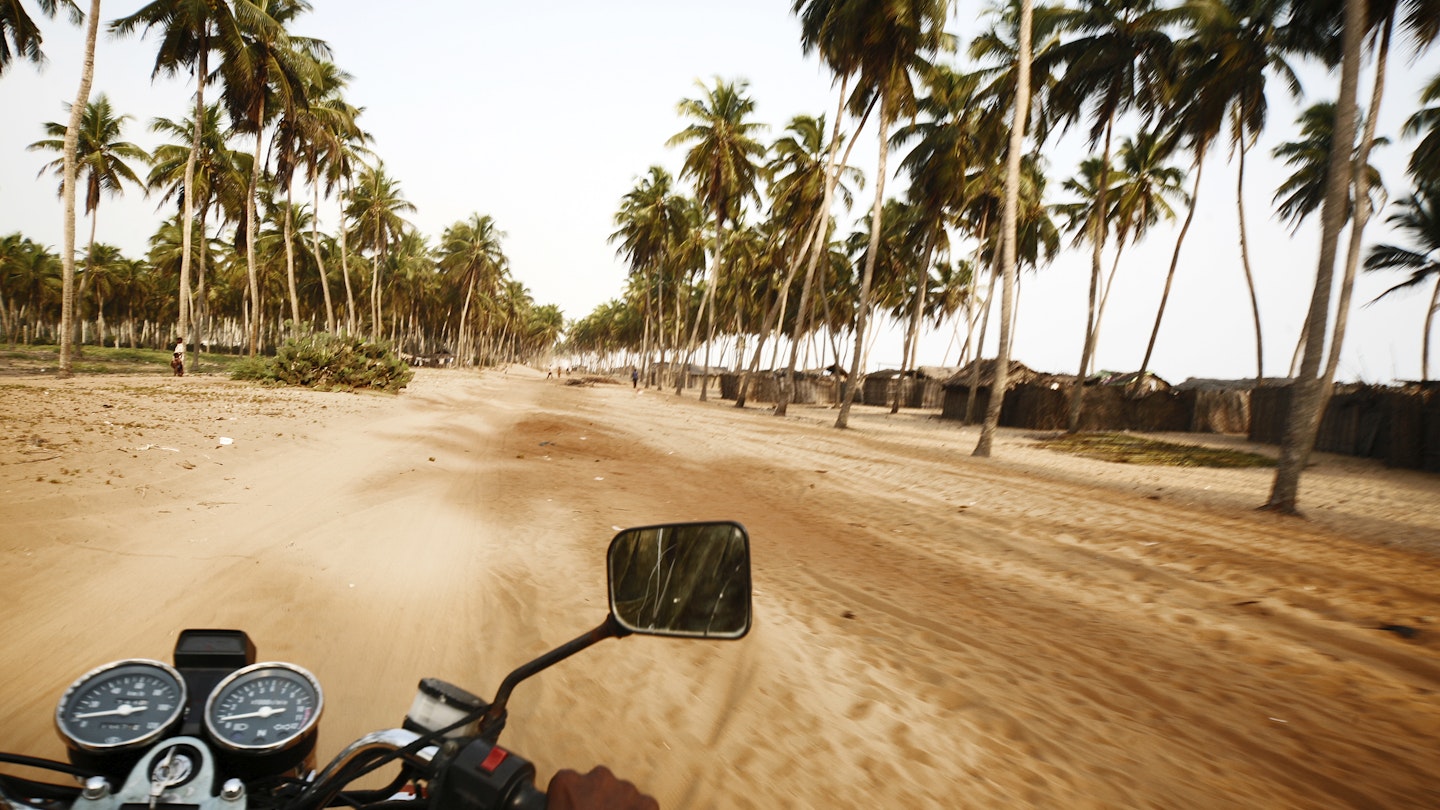Top Road Trips in Benin for Cultural Exploration
Underrated and underexplored, the small slither of West Africa that makes up Benin is best covered by road. Bordering Nigeria to the east, Togo and Burkina Faso to the west, and Niger to the north, Benin offers as much to travelers as its neighboring countries. From immersing yourself in Vodou culture in Ouidah to learning about the Dahomey Kingdom in Abomey, you’ll discover surprises and spectacular locations.
Here, we’ve picked four road trips that showcase the highlights of Benin, including the beautiful beaches of Grand Popo, the capital Porto Novo, and the bustling Cotonou. So buckle up for an adventure!
1. Vodou Adventures
Benin’s Most Extraordinary Drive
Cotonou–Ouidah; 38 km (23.5 miles); 1 hour 30 minutes
Cotonou, lined by immaculate ginger-colored beaches and filled with vibrant markets, is the perfect place to begin your journey. To gain a deeper understanding of Vodou culture, take the RNIE1 road inland and prepare for the unexpected. Vodou, also spelled Vodun, intertwines medicine, philosophy, and justice, grounded in the belief that everything is spirit. Therefore, you may come across Vodou priests performing rituals, as energetic dances are not uncommon during your travels.
Additionally, if your trip coincides with the Fête du Vodun on January 10, you will have the opportunity to witness local celebrations in Ouidah. One must-see stop along the route is the Sacred Forest, home to wooden statues of Vodou deities, nestled among iroko trees and medicinal plants. Once you arrive in Ouidah, head to the Ouidah Museum of History to further explore Vodou traditions.

2. The Lake Nokoué Loop
Benin’s Most Scenic Road Trip
Porto Novo–Ganvié; 37 km (23 miles), 2 hours
This picturesque road trip loops around the stunning Lake Nokoué from Porto Novo to Ganvié via RNIE1 and RNIE2. With its dry, dusty dirt roads and numerous potholes, caution is essential while driving. The area is home to unique wildlife, including the white-crested tiger heron and the African openbill. You’ll have the opportunity to enjoy breathtaking views of the sparkling 16,000-hectare lake from various angles along this drive.
Ganvié, known as the “Venice of Africa,” is a stilt village where you can interact with locals and learn about their rich culture. Boat rentals are also available, allowing you to explore the waters of Lake Nokoué. Remember to fill up with gas in Porto Novo before you start, as there are limited stops along the way.

3. The King’s Route
Best Road Trip for First-Timers
Grand Popo–Abomey; 147 km (91 miles), 3 hours
As you head north from the sandy beaches of Grand Popo, the landscape transforms dramatically. You will witness fields of yams and maize, grazing animals, and local women and girls transporting large containers of water. This journey along RNIE1 and RNIE4 leads you to Abomey, the ancient capital of the Dahomey Kingdom, which ruled from 1625 to 1894. However, be prepared for pothole-ridden sections, particularly on RNIE4, and consider avoiding this road during the rainy season (May–November).
One of Benin’s most culturally significant destinations, Abomey features numerous temples and palaces that showcase the country’s rich heritage. Be sure to visit the Musée Historique d’Abomey to explore the customs and traditions of the Dahomey Kingdom.
4. A Capital-to-Capital Cruise
Best Road Trip to Compare the Ancient with the Modern
Abomey–Porto Novo; 131 km (81 miles), 3 hours 30 minutes
This journey from the ancient capital of the Dahomey Kingdom to modern-day Porto Novo presents a fascinating blend of lush green landscapes peppered with homes, schools, and vibrant communities. Once you reach Porto Novo, explore historical landmarks such as the Notre-Dame Cathedral, Grande Musée de Porto Novo, and Jardin des Plantes et de la Nature. The Afro-Brazilian architecture of these sites significantly influenced the region during the long history of the transatlantic trade of enslaved Africans.
While the route begins as a dirt road, it transitions into tarmac halfway through, providing a smoother driving experience despite the potholes and the availability of fuel stations along the way.
Tips for Driving in Benin
- Do not rely on Google Maps for navigation, as the service can be inaccurate in Benin.
- While renting a car is possible, hiring a local driver is often the better option due to their knowledge of the roads.
- Plan your road trips during the dry season (December–February) to avoid challenging conditions that can arise during the wet season (May–November).





